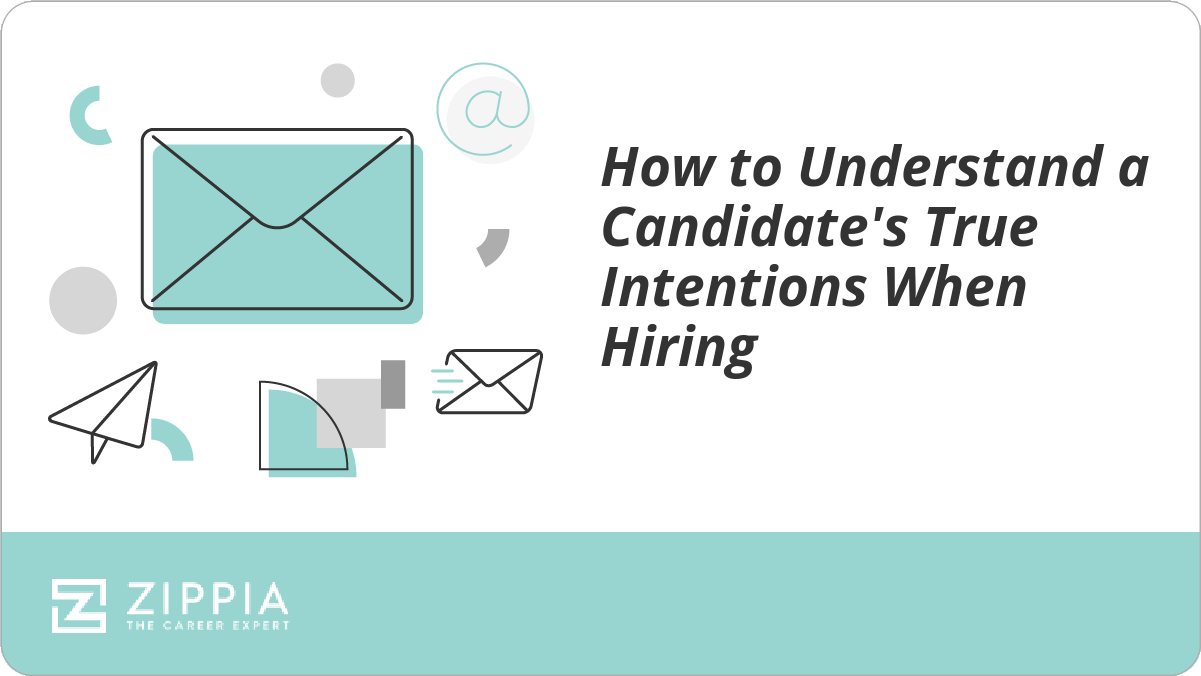As hiring manager, you come across the problem of employee motivation time and again. Employers do their best to keep employees motived and productive.
It’s not that hard to do when working with long-term employees. But new entries are apples of another tree: managers don’t yet know them, so it becomes a resource- and time-consuming challenge to build an efficient system of communication and motivation in the workplace.
Moreover, it may happen that your new comer doesn’t support the company’s mission, goals, culture, and views. Hiding his or her true intentions and motivations for working at your company, such a candidate will hardly generate value but cost you time and money.
To evade the problem, make sure you understand the true intentions of prospective employees before hiring.
Key Takeaways:
-
It’s important to understand and define a candidate type of motivation to work.
-
Body language such as posture, eye contact, and gestures can be an indication on a candidates true intentions.
-
Make sure you ask open ended questions to help understand their motives with your company.

Define Their Type of Motivation
Motivation is the combination of “internal and external factors that stimulate desire and energy in people to be continually interested and committed to a job, role or subject, or to make an effort to attain a goal.”
HR teams of most companies work on providing external factors to motivate employees. But when it comes to hiring new talent, it’s crucial to define a candidate’s internal motives influencing his or her work efficiency. Knowing them, you’ll be able to figure out all possible demotivators for that particular person as well as how long it might take them before they lose interest in their work.
There are five types of internal motivations:
-
Reward. An employee works for money and other material benefits
-
Recognition. An employee craves for praise from managers and colleagues
-
Process. The process of work itself inspires an employee
-
Achievement. An employee goes for self-empowerment and personal fulfilment
-
Ideology. An employee works for meeting a company’s goals and mission
One way to assess the motivation type of your prospective employee is through a phone interview. For Example just ask:
Say he mentions company steadiness, wage rates, job duties, room for professional and personal growth, and friendly co-workers. Such standard information can tell a lot about the internal motives of this candidate:
He says, “company steadiness;” you read, “the need for security.”
He says, “wage” and “job duties;” you read, “the need for respect.”
He says, “professional growth;” you read, “the need for self-actualization.”
He says, “a team of co-workers;” you read, “the need for group affiliation.”
Note the answers and invite him to a face-to-face interview. It’s that very stage when a candidate’s body language can tell you much more than words about his true intentions.
Understand Body Language
With several guides available on how to succeed in job interviews, candidates get more and more creative today: they come up with “correct” answers to all questions beforehand. They say what you want to hear, not what they think or feel in fact. And yet, one tiny detail can help you “read” prospective employees because it’s not as easy to control as words:
Body language.
Nonverbal cues such as the gestures, posture, and facial expressions of a candidate will tell you more about their intentions than words.
-
Posture. Slouching can be a signal of low self-confidence or disrespect. Leaning back in a chair or coming too close to a recruiter’s face is a demonstration of defensive position. When a candidate tells you how excited they are about working at your company, pay attention to their shoulder movements: moving one shoulder or no moves at all is a bad sign. It signals of uncertainty or lying.
-
Eye contact. Most recruiters agree that poor eye contact, when a candidate averts eyes all the time or focuses on something else, is a sign of dishonesty. But it’s not cut and dried: looking the other way for a moment when answering your question doesn’t turn a person into a liar. Maybe, they are shy; or, trying to remember something. As they say, moderation is the key.
-
Gestures. Overdoing arm and hand gestures is not that good. Thus, constant chopping and finger pointing give authoritarians away; not the sort of person to hire for teamwork, right? Rubbing their neck all the time, a candidate demonstrates frustration or tries to hide lies. Playing with hair or crossing arms? Your candidate might feel uncomfortable or insecure
Ask the Right Questions
They fit both STAR and CASE interview methods, and you can ask them to candidates for both front- and back-office positions.
-
Why did you change your workplace?
Give a candidate about 10 minutes for self-presentation. Let them tell about their most significant accomplishments in their professional career as well as reasons why they changed employers.
Say your candidate has 12 years experience and has had 5 employers during this period. The main reasons for job change could include:
-
Low salary (the need for respect)
-
No room for career growth (the need for self-actualization)
-
Conflicts with colleagues or big bosses (the need for group affiliation)
-
Late payment of wages (the need for security)
-
Unattainable goals, plans, tasks (the need for respect)
Compare the answers with those from the phone interview (see above). The #3 and #5 reasons are widely met, so ask for more details if a candidate mentions them. This is the moment for you to see if your candidate is lazy, unsociable, combative, and so on.
-
-
Where do you see yourself in two years?
Most candidates hate this question, while most recruiters continue asking it. And rightly so: it helps to figure out internal factors stimulating a person to work well. The trick is to frame it right and ask it when the time is right.
Ask “Who do you see yourself as in two years?” after you’ve built strong communications with a candidate, i.e., when he stops giving socially anticipated answers to your questions. Possible choices:
-
A head of department (the need for self-actualization)
-
A first-rate family man (the need for group affiliation)
-
An expert in the field (the need for knowledge)
-
A successful business owner (the need for self-actualization)
-
An employee at the same position (the need for security)
In light of the answer, draw a conclusion and decide if it’s the motivation your company is waiting for.
-
-
What are your life values?
Ask a candidate to disclose his or her top five life values in descending order of priority. It’s a catchy question: nearly 37% of applicants don’t say a single word about a job or career, which could be a warning sign for some recruiters.The most common answers here are a family (the need for affiliation), money (the need for respect), a hobby (the need for aesthetic), work (the need for self-actualization), and personal growth (the need for self-empowerment).
All the above—defining their motivation type, “reading” their body language, and mastering the art of asking right questions—is a secret weapon of professional recruiters to understanding a candidate’s intentions in a very elementary stage of personnel selection. It will help to eliminate those inappropriate and guide the top talents on their way to success.
Understanding a Candidates True Intentions FAQ
-
How do you find the intent of a candidate?
Body language can tell a lot about the intent of a candidate. Any nonverbal ques such as their gestures, posture, and facial expressions can reveal the true intent of a candidate far more than their words can. Paying attention to their eye contact can show if a candidate is being dishonest or not. If they avoid all eye contact or focus on something else could mean a bad sign for the candidates intent on the position. Also notice how their posture is, slouching can be a sign of low self-confidence or disrespect.
-
How do you tell if a candidate wants the job?
The best way to know if a candidate wants the job or not is to see how responsive they are and if they ask a lot of questions. Candidates that are responsive and respond quickly are most likely interested in the position and the company. During the interview, if the candidate asks a lot of questions about the company and the position is also a sign that they have an interest. It’s important to review the kinds of question that they are asking though. Interest candidates will ask smart questions that help them get a better understanding of the position and what it will be like working at the company.
-
What are some important factors that influence the hiring process?
Some factors that influence the hiring process include the quantity and quality of the candidate pool and the urgency to fill the role. The hiring process and how long it takes to hire is determined by the urgency and how quickly you need to fill the role. If you need to hire right away, you have to be less picky about the candidate that you hire, but if you can take your time hiring, you are able to take longer to review each candidate.
Another factor that influences the hiring process is the quantity and the quality of your candidate pool. If you have a lot of candidates, you are able to select the perfect candidate easier. But if you have a small pool, you wont have that same luxury.
-
What is a red flag in a candidate?
A red flag in a candidate is any negativity from them. This can be complaining or bad mouthing a previous employer. If they are negative during the interview, they will most likely be negative and toxic once hired. Any negativity can have negative effects in the workplace and will make it miserable for everyone. It’s also important to remember that if they are talking bad about their previous employer, they will most likely do the same to your company.





